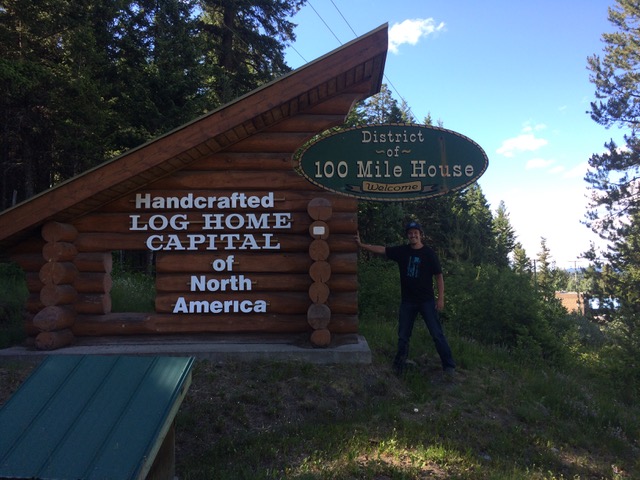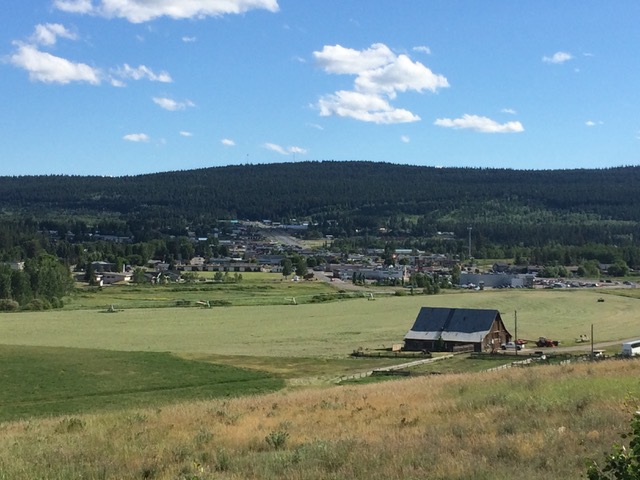Blog 2 – History of 100 Mile House
July 5, 2017 12:39 pm 2 Comments
I decided that for my second blog I would provide a bit of background on my hometown 100 Mile House B.C. which I have now moved back to in order to pursue a forestry career.
First of all, it is important to acknowledge that First Nations people came to this region very early and evidence has been found in nearby Soda Creek that has been carbon dated at approximately 2300 B.C. 100 Mile House is located in the Secwepemc (Shuswap) nation and is part of the traditional territory for a number of bands. The closest First Nations communities are located at Canim Lake northeast of town, as well as Dog Creek and Soda Creek which are located southwest of town.
Throughout my life I have often been asked by people to explain how 100 Mile House got its rather strange name. The name was derived from the Cariboo Gold Rush which began when gold was discovered in the late 1850’s. Thirty thousand people poured into British Columbia (B.C.) from the United States and the British government worried about losing its sovereignty and quickly made B.C. a colony of Great Britain in 1858.
While many people made money by toiling for gold in the region others made money in setting up roadhouses where the weary travelers could eat, drink, sleep and rest their animals. Lillooet, located 130 kilometers north of Whistler was officially ‘Mile 0’ and roadhouses with names designated by their distance were developed along the Cariboo Wagon Road. 100 Mile House is located at the 100 Mile mark along this wagon road. Subsequently, there are many other locations along this route that are named after a roadhouse location along the trail including 59 Mile, 70 Mile, 83 Mile, 93 Mile, 100 Mile, 103 Mile, 105 Mile, 108 Mile, 111 Mile, 150 Mile and beyond.
In 1912 Lord Egerton of Tatton and Marquis of Exeter bought land in the area, Lord Egerton purchased land from 105 Mile, 108 Mile and 111 Mile ranches and the Marquis purchased the roadhouse and 12,000 acres of ranchland in 100 Mile. In 1930 the Marquis of Exeter’s son, Lord Martin Cecil arrived in 100 Mile to operate the ranch and constructed a new lodge to replace the decaying house. The lodge is still located in 100 Mile house near the Red Coach Inn and there is also a Barnard’s express stagecoach on display. The stagecoach era quickly came to an end with the development of a railway and passengers arriving in town via train.
In the forties and fifties the Cariboo region began to boom with many people homesteading and taking advantage of the abundant timber and establishing sawmills in many of the surrounding unincorporated communities like Forest Grove and Lac La Hache. A modern highway was soon established and land was leased to establish a town. Lord Martin Cecil helped plan the burgeoning town and donated land for many of the publicly owned buildings in town.
Modern 100 Mile House is still known for its ranches but has a close relationship with the forest industry and West Fraser owns two modern sawmills in the area with one just west of town and another located 60km south at the painted Chasm. There is also a Oriented Stand Board plant in town owned by Norbord and a number of log home building companies and is considered the Handcrafted Log Home Capital of North America.
Finally, 100 Mile House is known for its hundreds of fish bearing lakes, and spectacular scenery that makes the Cariboo such a great place to live and work.







2 Comments
Thank you. My family came to Spring Lake in 1914 from NB usa. I had uncle at 100 house Jackie Johnson he built log houses and farmed Marvin Mcclary
A very concise and detailed history of our beloved town! Nice job Jeff!!! Keep safe! CARIBOO ??